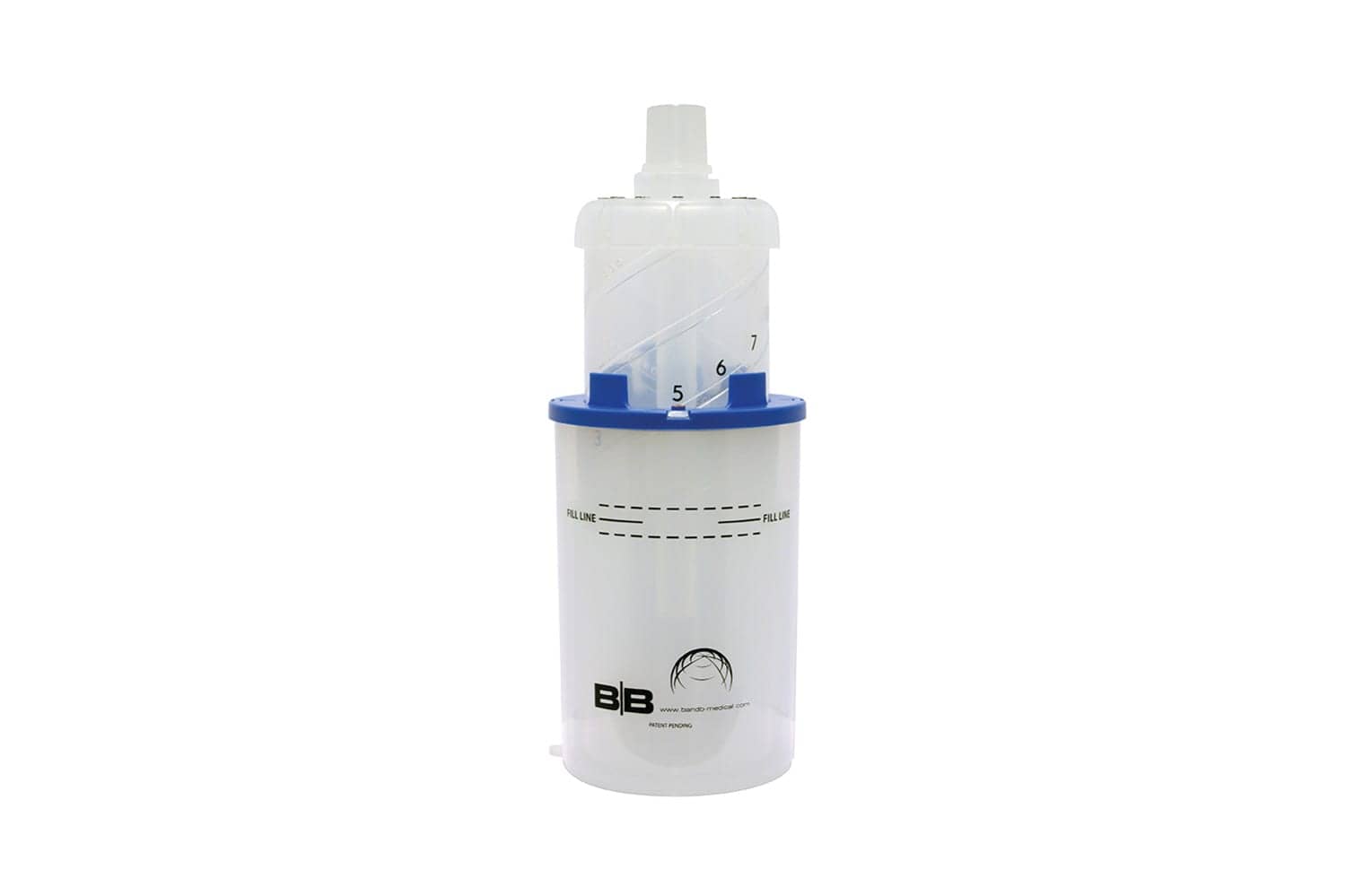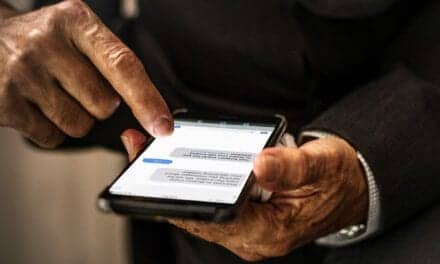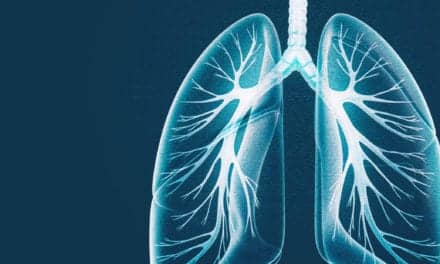New devices are continuing the life-saving impact of bubble CPAP technology, which, since 1973, has saved thousands of newborns with severe respiratory illnesses.
By Phyllis Hanlon
Every year approximately 12% of babies in the United States are born prematurely; 10% of that number develops respiratory distress syndrome (RDS), according to the National Heart, Lung, and Blood Institute (NHLBI). And the earlier a baby is born, the higher the risk for developing RDS. For example, a baby born before 29 weeks gestation has a 60% chance of developing RDS, while a full-term baby has a nearly zero percent chance.

Although mechanical ventilation with continuous positive airway pressure (CPAP) helps to prevent the collapse of alveoli in the lungs and may increase survival rates, some babies still develop bronchopulmonary dysplasia (BPD). A BMJ study found nasal CPAP, a noninvasive technique, more effective than intubation for reducing BPD.1
In 1973, Jen-Tien Wung, MD, FCCM, professor of clinical anesthesiology in pediatrics at the Columbia University College of Physicians and Surgeons, pioneered a new system that offered safe, efficient, and cost-effective treatment of respiratory difficulties in neonates.
The bubble CPAP (bCPAP) delivery system comprises a humidified gas source, an interface that connects the CPAP circuit to the infant’s airway through short nasal prongs, and a tube submerged in a bottle of water. As the gas exits the tube, it creates bubbles that produce small airway pressure oscillations. When these oscillations reach the neonate’s lungs, the result is improved gas exchange and lung function.
bCPAP has been used at Columbia Medical Center since 1973, and its neonatal intensive care unit has one of the lowest rates of bronchopulmonary dysplasia in the world: between 4% and 8% versus the national average of 24% to 30%. Wung said, “More than 20,000 infants have been successfully treated with bubble CPAP at Columbia.”
Since its introduction in the 1970s, bubble CPAP has demonstrated efficacy in the delivery room as a rescue therapy, an extubation tool, and a method for managing apnea of prematurity.2
In spite of the success of bCPAP, clinicians found that earlier devices could cause some nasal-related problems. “Nasal trauma can be eliminated by keeping a cushion of air of 1-2 mm between the nasal septum and the bridge of the nasal prongs. Also, using the appropriate-sized prongs or one-size bigger prongs will eliminate that possibility. Of course, constant vigilance by the nurse is important,” said Amer Ammari, MD, a specialist in neonatology and perinatology in Chicago.
Ammari also cautioned clinicians to use care when setting tubing pressure. “Using any old ventilator pressure tubing connected to any orifice in the circuit will make the ventilator alarm whenever the pressure is lost. Chinstraps can be fixed to the hat on both sides. This prevents the hat from sliding backwards and will keep the mouth partially closed.”
Building a Better System
Through the 1980s, much attention was focused on ventilation, according to David Hendrickson, neonatal product and sales manager for Fisher & Paykel Healthcare’s North America division. But this strategy had been overutilized and significant advances had changed the market, he added. “Ventilation is invasive and does more harm than good, although there is still a place for ventilators,” he said. “But bubble CPAP is a gentle way to vent a baby.”
Before device manufacturers created effective and FDA-approved systems, respiratory therapists and other clinical personnel attempted to create a “homemade” device using a syringe, tubing, and a water bottle. Not only were these devices unsafe, but often they were not effective, Hendrickson noted.
When Fisher & Paykel began its research and development for bCPAP systems, the company took many factors into consideration. The company’s R&D paid off and currently has the only FDA-approved full bCPAP system on the market, Hendrickson reported. “All the parts and pieces you need are in one place with the Fisher & Paykel device. It’s a matter of safety and risk management.”
Other a la carte systems may not offer the same level of safety, he added. Fisher & Paykel’s Bubble CPAP comes in an All-in-One pack, which contains a generator, heated breathing circuits, humidification chamber, and pressure manifold. Fisher & Paykel’s system has a self-leveling mechanism that ensures consistent pressure delivery. “You need a mechanism to deliver the same pressure, whether a clinician is watching or not,” said Hendrickson. “This is a big selling point.”
Accurately charting medical information is also critical during emergency situations. “Pressures delivered in bubble CPAP can be affected by the length of the tubing, resistance to flow, and condensation, resulting in increased water level. The F&P Bubble CPAP system is designed to have the lowest resistance to flow as possible, and the unique auto-leveling mechanism of the generator ensures consistent water level and therefore consistent pressures. This is a key point of difference,” Hendrickson pointed out.
Aware of the high rate of employee turnover as well as per diem staff, Fisher & Paykel also sought to create a system that involved a short learning curve. “Respiratory therapists often work in several hospital environments so any device has to be easy to use,” he said.
While most bubble CPAP systems use water, some may use an acetic acid solution in their bubblers. Hendrickson said, “This might be overkill. There is a definite odor to it, but this is a clinical decision.”
All-in-One Device
New to the market is the B&B Bubbler, a bCPAP device that received 510(k) approval from the FDA in March, according to Stu Novitz, B&B Medical’s vice president of sales and marketing. Designed with input from a focus group comprising clinicians, nurses, neonatologists, and other medical professionals, the device represents a new structure in bCPAP.
Derick Corrente, B&B Medical’s director of operations, explained that the device incorporates safety, cost-effective, convenient, and versatile features and is designed to deliver between 0 and 10 cm H2O CPAP for infants weighing under 10 kg. “The device addresses clinical needs and has a financial impact,” he said.

Corrente explained that the B&B Bubbler has a dual-chambered wall for monitoring fluid level. “The device does not have to be disconnected in order to see the water level,” he said. The drainable overflow chamber does not allow the water to rise above a prescribed level. If evaporation occurs, a port on top makes it easy to add water without interrupting the flow. Moreover, the B&B Bubbler can be secured onto a standard equipment pole with a single or custom dual pole clamp, due to its integrated ISO-compliant equipment mount. “This is the first unit to have these features in one device,” Corrente pointed out and added that this product comes within 1 cm of accuracy.
Furthermore, Corrente noted that bCPAP is capable of treating 10 to 20 neonates at the same cost of treating one with another nasal system. The risk of developing ventilator-associated pneumonia is also significantly reduced, since no mechanical ventilation or endotracheal intubation is involved. Novitz said, “This product is simple, reliable, and produces good clinical outcomes. It’s also less expensive, and cost-effective.”
Bubble CPAP not only has demonstrated measurable cost savings when compared to ventilator CPAP, but also has proven to have a high frequency and stochastic effect, according to Wung. “I have not found any simpler and more cost-effective alternative yet.”
RT
Phyllis Hanlon is a contributing writer for RT. For further information, contact [email protected].
References
- Schmölzer GM, Kumar M, Pichler G, Aziz K, et al. Non-invasive versus invasive respiratory support in preterm infants at birth: systematic review and meta-analysis. BMJ. October 2013;347:f5980.
- Bonner KM, Mainous RO. The nursing care of the infant receiving bubble CPAP therapy. Advances in Neonatal Care. April 2008;8(2):78-95.











Currently using Bubble CPAP with Fischer Packyl system with mask And prongs and headset. I know their has got to be a better system. To labor intensive and hard to access pt. Seems a type of Nasal cannula with nasal pillows, like we use on home cpap units, would be more effective. Any ideas out there? Just think we can do better.
Needed information on current studies to introduce the F&P delivery system to a new growing NICU facility. F&P closed system with Hudson prongs is currently being used. Im trying to introduce the generator with the option to use prongs or mask for our 24 weeker growing population. All the information will be greatly appreciated.
Thank you
Ida Figueroa Saucedo RRT